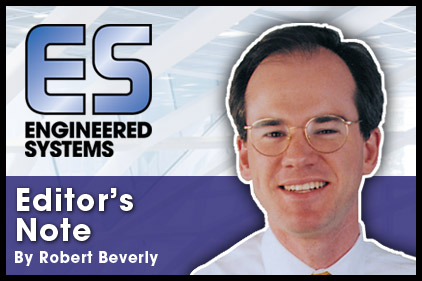As we were putting this issue together, I got a follow-up email from Joseph Dussault, who co-wrote the feature about the big ventilation/ductwork retrofit at Yawkey Boston Medical Center. Dussault reports that since the article was first submitted, the project has since earned an energy project of the year from AEE New England. Joe also mentions there may be a video available on YouTube about the project. Hearty congratulations to the project team on their award, and if we can track down the video, we’ll try to post it at www.esmagazine.com as well.
Speaking of awards, if your team picks up an award for your work, I’d really like to hear about it. Send me the good news at beverlyr@bnpmedia.com.
FIRMS & FIRINGS
Are the principals and partners in your firm or organization pulling their weight? You may recognize ZweigWhite from the surveys they occasional publish about the professional/engineering world. Last month, they released their 2014 Principals, Partners and Owners survey, which (among other things) found that “the number of firms reporting firing or laying off a principal due to non-performance has risen 9 percentage points to 37 percent.” Furthermore, “nearly 20 percent of firms report firing a principal due to misconduct.”
One related factor mentioned is whether a firm has minimum eligibility requirements in place for the initial hiring decisions at that level. In addition to licensure, that might include project experience, minimum time with the firm, etc. Just less than half of the survey’s firms reported having such requirements. Larger firms were more likely than smaller firms, which is not surprising.
If you’d like to find out more about the results of the survey, visit www.zweigwhite.com/p-2193-principals-partners-owners-survey-2014.
DOE GOING 90.1-2013 (PART 1)
From the ever-steady ASHRAE portion of the inbox, we learn that the DOE has assessed ASHRAE/IES’ 2013 standard “contains energy savings over the 2010 standard of 8.5 percent and 7.6 site energy.” This sort of work is a step on the path to making the 2013 version the updated building reference standard for states.
Here are some elements the DOE singled out as contributing to the 2013 version’s improved results.
- Control requirements for lighting alternations
- New requirements for individual fans
- Reduction of energy usage for large boilers
- Reduction of fan energy usage
- New efficiency requirements for commercial refrigeration
- More controls in more spaces and reduction of time to reduction or shut off of those controls
- Reduction of lighting power density in most building types
As of mid-May, the DOE was soliciting comments on this preliminary determination. Learn more at www.energycodes.gov/regulations/determinations.




